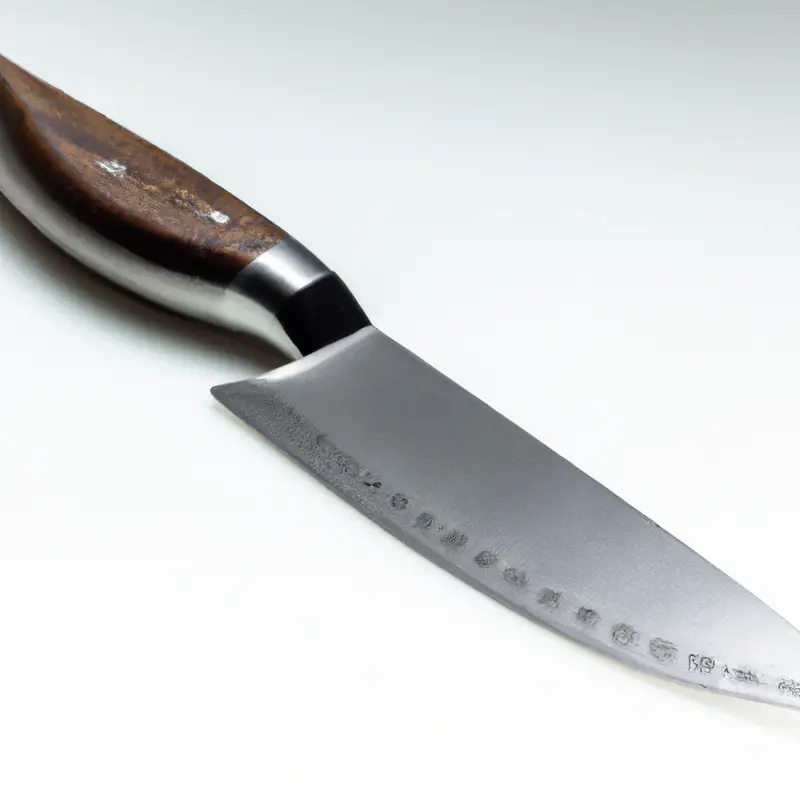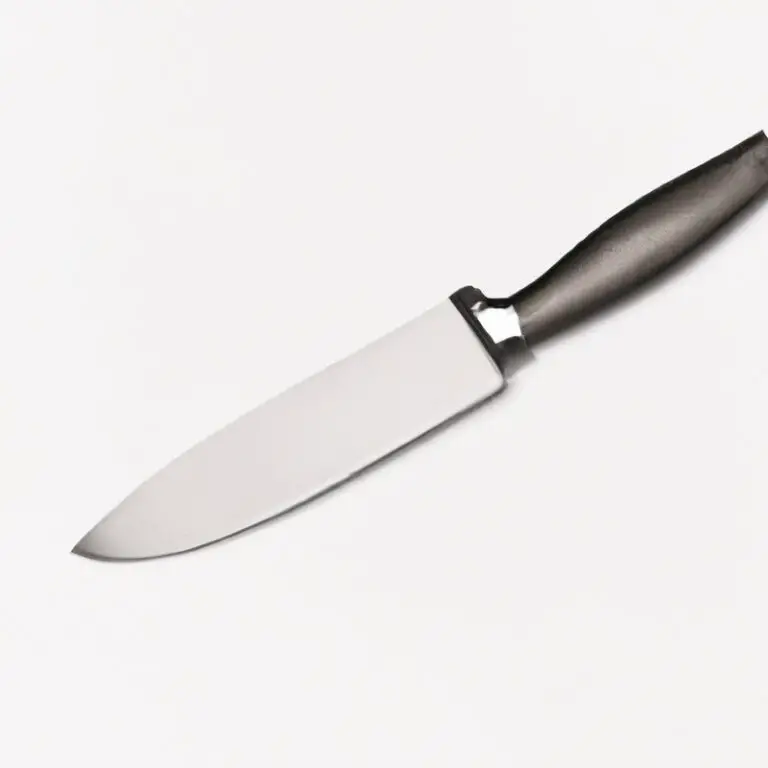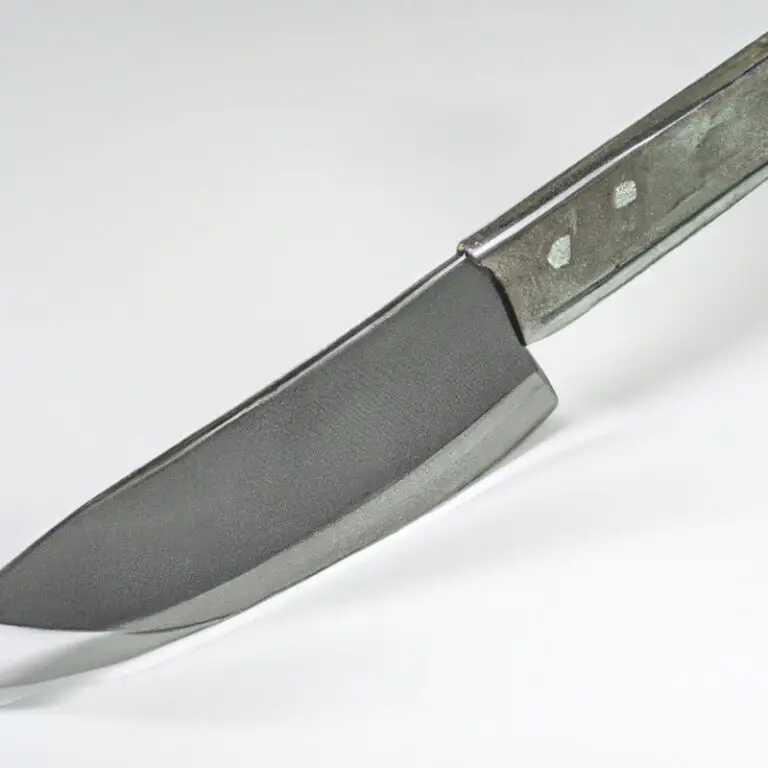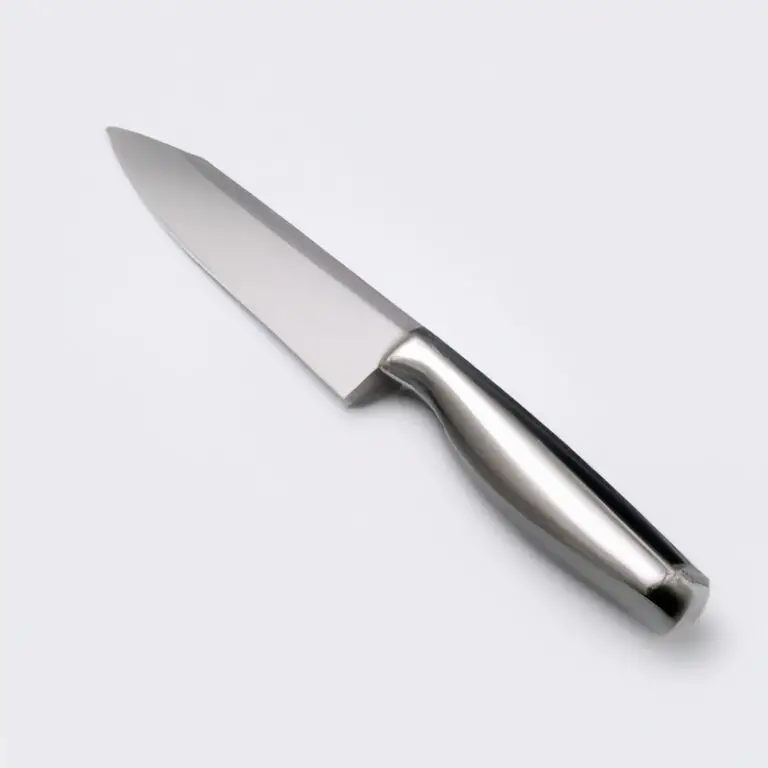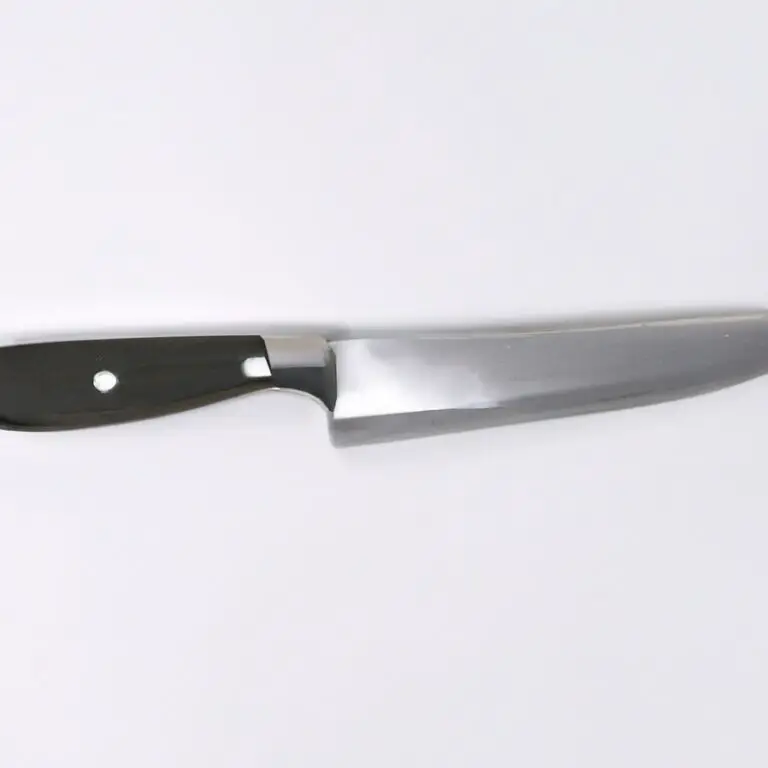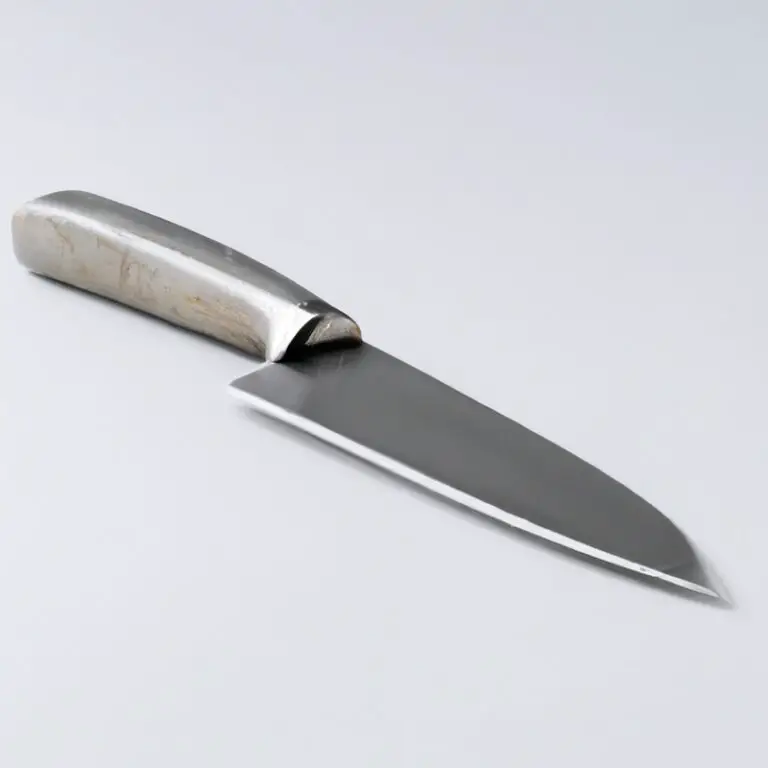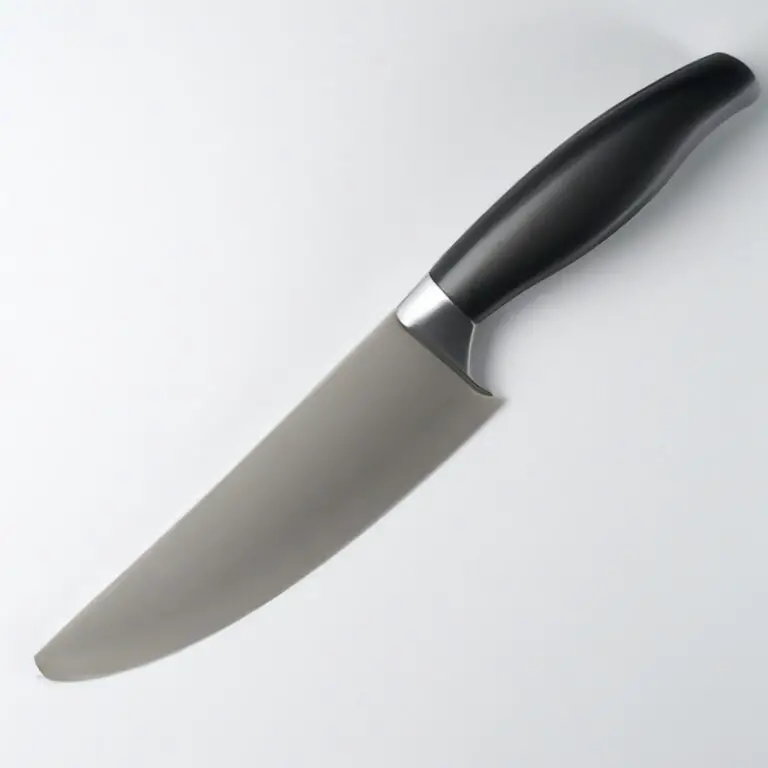Can I Use a Paring Knife To Peel Hard-Skinned Fruits Like Mangoes? Tips
Key Takeaways:
- While a paring knife can be used to peel hard-skinned fruits like mangoes, it may not be the most effective tool.
- Using a peeler or a serrated knife can make the task of peeling hard-skinned fruits easier and faster.
- It is important to ensure that the blade of the knife used for peeling is sharp to avoid damaging the fruit or injuring oneself.
- Experiment with different tools and techniques to find the best way to peel hard-skinned fruits like mangoes that works for you.
Have you ever found yourself struggling to peel a thick-skinned fruit like a mango with a regular knife? As someone who loves cooking, I understand how important it is to have the right tool for the job.
Paring knives are a popular kitchen tool that many of us have in our utensil drawers, but can they be used for peeling tough-skinned fruits?
In this blog post, I will dive into the types of hard-skinned fruits, the pros and cons of using a paring knife for peeling mangoes, safe practices for handling knives, and other alternative tools for fruit peeling. Let’s sharpen our knowledge and get to it!
| Yes | No | |
| Is a paring knife suitable for peeling mangoes? | ✓ | |
| Can a paring knife easily grip the tough skin of a mango? | ✕ | |
| Will a paring knife leave too much fruit flesh behind while peeling mangoes? | ✕ | |
| Does a paring knife have a pointy tip that can be used to cut intricate shapes out of mangoes? | ✓ | |
| Are there any alternate knives that can successfully peel and cut mangoes? | ✓ | |
| What are the alternate knives that are recommended for peeling and cutting mangoes? | Chef’s Knife, Vegetable Peeler |
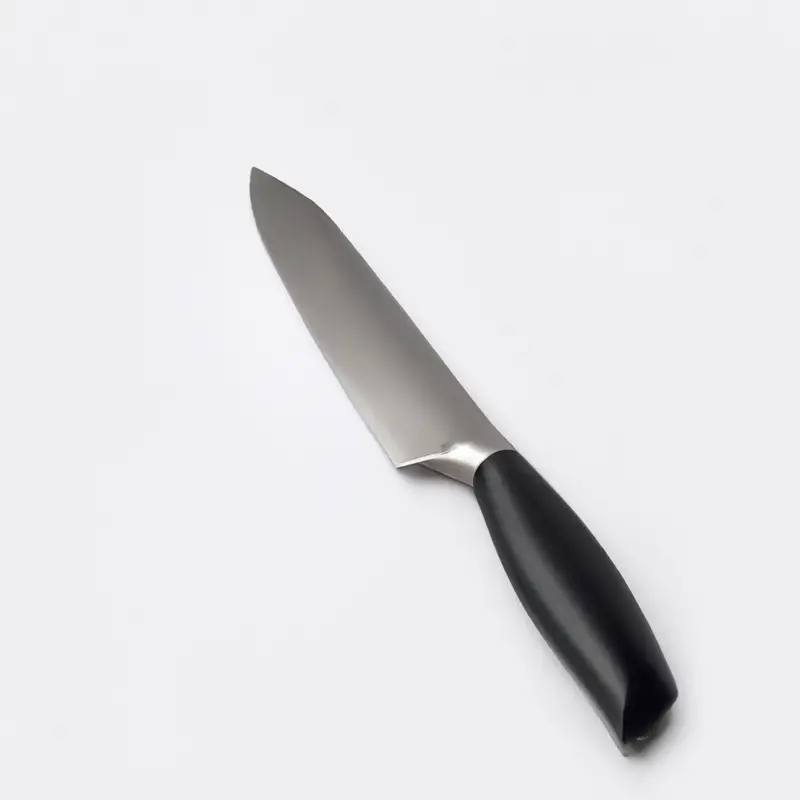
Overview of Paring Knife
A paring knife is a small, sharp knife typically used for peeling and trimming fruits and vegetables. It has a short, pointed blade that makes it easy to maneuver around curved surfaces, such as mangoes.
Paring knives are available in a variety of blade materials, including stainless steel, carbon steel, and ceramic.
They also come in different lengths and shapes to suit different cutting tasks. When selecting a paring knife, it is essential to choose one that feels comfortable in your hand and has a sharp blade to avoid damaging the fruit or vegetable you are working on.
Types of Hard-Skinned Fruits
There are many types of hard-skinned fruits that can be challenging to peel. Some examples include:
- Mangoes – a tropical fruit with a tough, fibrous skin that can be difficult to remove.
- Pineapples – their spiky skin and hard, prickly top can make peeling a challenge.
- Papayas – their thick skin can be tough to cut through, especially when the fruit is unripe.
- Kiwis – their fuzzy skin can be tricky to remove without damaging the fruit inside.
- Avocados – can have a thick, leathery skin that can be difficult to peel without causing damage.
It’s important to note that the difficulty of peeling these fruits can also depend on their ripeness and individual characteristics, so it’s always a good idea to research specific fruits before attempting to peel them.
Can a Paring Knife be Used for Peeling Mangoes?
Yes, a paring knife can be used for peeling mangoes. However, due to the toughness of the mango’s skin and the potential slippery nature of the fruit, it may not be the best tool for the job.
A paring knife’s small blade can make it difficult to maneuver around the curves of the mango and may require more effort to remove the skin.
It also increases the risk of injury if not handled properly. Therefore, it is recommended to use a sharper, wider, and longer blade such as a chef’s knife or a specialized mango peeler for easier and safer peeling.
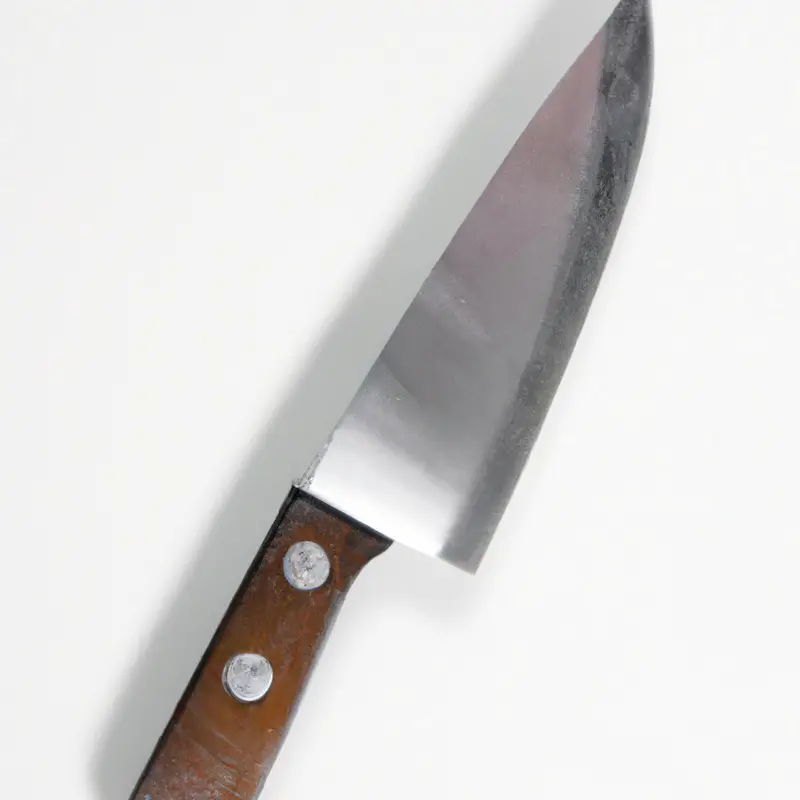
Pros and Cons of Using a Paring Knife for Peeling Mangoes
Pros:
- Control: Paring knives are small and lightweight, making them easier to handle and maneuver when peeling small or curved fruits like mangoes.
- Precision: Paring knives have a sharp, pointed blade that allows for precise cuts, making it easier to remove the skin of a mango without removing too much flesh.
- Accessibility: Paring knives are a common kitchen tool and can often be found in most households, making them a convenient option for peeling mangoes.
Cons:
- Risk of Injury: Paring knives are sharp and can cause severe injury if used improperly. Care should be taken when using a paring knife to peel a mango.
- Time-Consuming: Peeling a mango with a paring knife can be time-consuming compared to other methods, especially if the mango has a tough skin.
- Limited Use: Paring knives may not be suitable for peeling harder fruits like pineapples or jackfruit, which may require a more robust blade.
Overall, using a paring knife to peel a mango can be an effective method but may not be suitable for all individuals or fruits. Careful consideration should be taken when choosing the appropriate tool for peeling hard-skinned fruits.
How to Properly Peel Mangoes with a Paring Knife?
To properly peel a mango with a paring knife, follow these steps:
- Hold the mango vertically and slice off the sides, staying as close to the seed as possible.
- Score each slice in a crosshatch pattern, being careful not to cut through the skin.
- Flip the slice inside out to expose the cubes of mango flesh.
- Use the paring knife to gently separate the cubes from the skin, starting at the bottom and working your way up.
- Repeat with the other slice.
- If desired, slice off any remaining fruit near the seed with the paring knife.
Safety Precautions When Using a Paring Knife
When using a paring knife, there are some essential safety precautions to consider. These include holding the knife securely with your fingers away from the blade and keeping the blade pointed away from your body.
Also, keep the cutting surface dry to prevent the knife from slipping, and use a cutting board to stabilize the fruit.
It’s important to use a sharp knife to avoid using excessive force, which could lead to injuries. Never attempt to catch a falling knife, and always store it in a designated knife block or sheath.
By following these safety precautions, you can safely use a paring knife to peel hard-skinned fruits like mangoes.
Alternative Tools for Peeling Hard-Skinned Fruits
While a paring knife can work for peeling hard-skinned fruits like mangoes, there are several alternative tools you can opt for. One such option is a vegetable peeler, which is specifically designed for peeling fruits and vegetables and can make the peeling process easier and faster.
Another alternative tool is a serrated knife, which can effectively cut through the tough skin of fruits like kiwis and pineapples.
You can also try using a spoon to scoop out the flesh of fruits like avocados and cantaloupes. When choosing an alternative tool, make sure it is comfortable to hold and easy to maneuver.
Tips for Maintaining the Sharpness of Paring Knives
Keeping your paring knife sharp is key to efficiently and safely peel hard-skinned fruits like mangoes. Here are some tips to maintain the sharpness of your paring knife:
- Use a sharpening stone or sharpener to sharpen your knife regularly. A dull knife is more dangerous than a sharp one, as it requires more force to cut, increasing the risk of slips and injuries.
- Store your knife in a knife block or on a magnetic strip to avoid contact with other utensils that could damage the blade’s edge.
- Avoid cutting hard materials like bones or frozen foods, as this can dull the blade. Additionally, avoid using your paring knife for tasks different from peeling or small cutting.
- Handwash your knife and towel dry it immediately. The dishwasher can dull the blade and cause rusting.
- Use a honing steel to realign the blade’s edge before every use. This will help maintain the sharpness of your knife.
By following these tips, you can ensure your paring knife is always sharp and ready for the next task.
Final Verdict
A paring knife is a versatile tool that can be used to peel a variety of hard-skinned fruits, including mangoes. However, it is important to weigh the pros and cons before using this knife for peeling tasks.
While a paring knife has a sharp blade and provides greater precision, it may not be suitable for larger and tougher fruits.
If you decide to use a paring knife to peel mangoes, make sure to follow safety precautions and use proper technique to avoid injury. Alternatively, there are other tools that can be used for peeling, such as vegetable peelers and serrated knives.
Ultimately, the key to maintaining the sharpness of your paring knife and ensuring it lasts for many years is to handle it with care and keep it properly maintained.
By following these tips and utilizing the proper tools, you can enjoy perfectly peeled mangoes and other hard-skinned fruits with ease.

